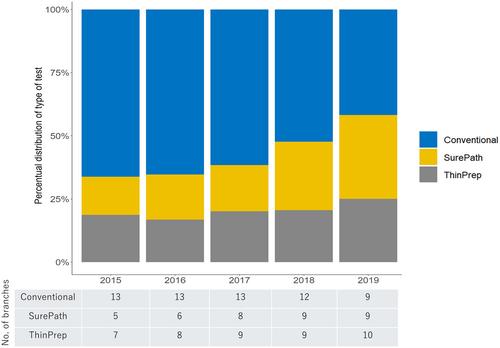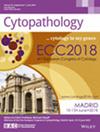Cervical cancer screening efficacy using SurePath, ThinPrep and conventional cytology: A large data set analysis from the Japan Cancer Society
Abstract
Objective
Over the past decade, liquid-based cytology has replaced conventional cytology for cervical cancer screening in many countries, including Japan. We aimed to evaluate the efficacy of liquid-based cytology using a large database and compare two major liquid-based cytology platforms, SurePath and ThinPrep, to conventional cytology.
Methods
Cervical cancer screening data were collected from the Japan Cancer Society between 2015 and 2019. The efficacy of liquid-based and conventional cytology in detecting cervical intraepithelial neoplasia (CIN) was evaluated. Detection rates and positive predictive values were compared using a Poisson regression model.
Results
We collected data of 3,918,149 participants, including 2,248,202 conventional cytology, 874,807 SurePath and 795,140 ThinPrep smears. The detection rate of CIN2 or more was 1.14 times higher using SurePath than that using conventional cytology (95% confidence interval [CI], 1.09–1.20; p < 0.001). Contrastingly, the detection rate of CIN2 or more was 0.91 times lower using ThinPrep (95% CI, 0.86–0.96; p < 0.001). The detection rates of CIN3 or more did not differ significantly between SurePath and conventional cytology (detection rate ratio, 1.04; 95% CI, 0.97–1.12; p = 0.224). The positive predictive value ratios of CIN2 or more were 0.80 using SurePath (95% CI, 0.76–0.84; p < 0.001) and 0.83 using ThinPrep (95% CI, 0.79–0.87; p < 0.001) compared with conventional cytology.
Conclusions
Liquid-based cytology, particularly SurePath, was useful for detecting CIN2 or higher in population-based cervical cancer screening. Further widespread use of liquid-based cytology methods would lead to efficient detection of cervical precancerous lesions.


 求助内容:
求助内容: 应助结果提醒方式:
应助结果提醒方式:


